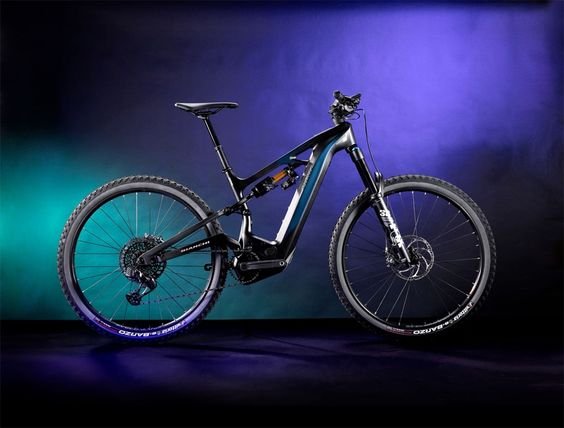
Electric vehicles (EVs) are rapidly gaining popularity as a sustainable and cost-effective alternative to traditional gasoline-powered cars. With numerous models and options available, choosing the right electric car can be a daunting task. This article provides a comprehensive guide to help you select the best electric vehicle based on your specific needs, preferences, and budget.
1. Determine Your Driving Needs
Before diving into the details of various electric car models, start by evaluating your personal driving needs. Consider the following factors:
- Daily Commute Distance: Calculate the average distance you travel daily, including your commute to work, errands, and other activities. This will help you determine the range you need in an electric car. For instance, if your daily commute is around 30-40 miles, an EV with a range of 150-200 miles should suffice, while longer commutes may require a vehicle with a range of 300 miles or more.
- Driving Environment: Consider whether you drive primarily in urban or rural areas. City driving often involves stop-and-go traffic, where an EV’s regenerative braking can be advantageous. Conversely, rural driving may require a vehicle with a longer range and good handling for varied terrains.
- Vehicle Usage: Think about how you plan to use the car. Is it for daily commuting, family trips, long-distance travel, or a combination of these? This will help you identify the type of EV that suits your lifestyle, whether it’s a compact car, sedan, SUV, or a more spacious model.
2. Evaluate the Range of the Electric Vehicle
One of the most critical factors to consider when choosing an electric car is its range, or how far it can travel on a single charge. Range anxiety—the fear of running out of battery before reaching your destination—remains a concern for many potential EV buyers.
- Short-Range EVs: These vehicles typically offer ranges between 100-200 miles per charge and are ideal for city driving or short daily commutes. They tend to be more affordable and may suit individuals who do not need to travel long distances regularly.
- Long-Range EVs: EVs with ranges above 250 miles are better suited for those who frequently travel long distances or live in areas with limited charging infrastructure. Examples include the Tesla Model 3 Long Range and Ford Mustang Mach-E, which offer ranges of over 300 miles.
Considerations:
- Charging Infrastructure: Check the availability of charging stations in your area or along your usual routes. If you have access to home or workplace charging, a lower-range EV might be sufficient.
- Battery Degradation: Be aware that an EV’s range can decrease over time due to battery degradation. Opting for a model with a slightly higher range than you currently need can help mitigate this concern.
3. Understand Charging Options and Times
Understanding the different charging options and times is essential when choosing an electric car. There are three main types of charging:
- Level 1 Charging: This is the slowest charging option and uses a standard 120-volt household outlet. It adds about 3-5 miles of range per hour, making it suitable for overnight charging at home. However, it may not be practical if you have a long daily commute or need frequent top-ups.
- Level 2 Charging: This option uses a 240-volt outlet, similar to those used for dryers and electric stoves. Level 2 chargers can add around 20-30 miles of range per hour and are often installed at home, workplaces, or public charging stations. They provide a good balance between speed and convenience for most EV owners.
- DC Fast Charging: DC fast chargers provide the quickest charge, adding up to 80% of an EV’s range in 20-40 minutes. These chargers are typically located along highways and in commercial areas. While convenient for long trips, frequent use of fast chargers can affect battery health over time.
Considerations:
- Home Charging: If you plan to charge at home, consider the cost and feasibility of installing a Level 2 charger. Some EV manufacturers offer discounts or rebates for home charger installations.
- Public Charging Networks: Research the availability and accessibility of public charging networks in your area. Some automakers provide access to exclusive networks or offer charging credits, which can be a deciding factor.
4. Assess the Total Cost of Ownership
While the upfront cost of an electric vehicle can be higher than that of a traditional car, EVs can offer significant savings in the long run due to lower operating costs. To make an informed decision, evaluate the total cost of ownership, including the following:
- Purchase Price: Compare the base prices of different EV models. Look for government incentives, rebates, or tax credits that may reduce the cost. In many regions, governments offer incentives for purchasing electric vehicles, such as federal tax credits in the U.S. or grants in Europe.
- Insurance Costs: Insurance premiums for EVs may vary depending on factors like model, safety features, and repair costs. Contact your insurance provider to get an estimate for different models you are considering.
- Fuel Savings: Calculate potential savings on fuel costs. EVs are generally more cost-effective to operate than gasoline-powered vehicles, especially if you charge at home during off-peak hours or use free public chargers.
- Maintenance Costs: EVs have fewer moving parts than traditional cars, resulting in lower maintenance costs. They do not require oil changes, and there is less wear and tear on the brakes due to regenerative braking. However, consider the cost of potential battery replacement, which could be significant over the vehicle’s lifespan.
5. Consider the Size and Type of Electric Vehicle
Electric vehicles come in various shapes and sizes, each catering to different needs and preferences.
- Compact and Subcompact Cars: Ideal for city driving, these cars are easy to maneuver and park. Examples include the Chevrolet Bolt EV and Nissan Leaf. They are suitable for singles, couples, or small families with minimal space requirements.
- Sedans: Electric sedans like the Tesla Model 3 or Polestar 2 offer a balance of space, comfort, and range. They are great for daily commuting, road trips, and small families.
- SUVs and Crossovers: For those who need more space, electric SUVs such as the Ford Mustang Mach-E, Hyundai Ioniq 5, and Audi Q4 e-tron offer ample room for passengers and cargo, higher seating positions, and versatile utility. They are well-suited for families, adventure seekers, and those who need additional cargo capacity.
- Luxury EVs: If you’re looking for a premium experience, consider luxury models like the Tesla Model S, Lucid Air, or Mercedes-Benz EQS. These cars offer high-end features, advanced technology, and superior performance but come at a higher price point.
- Pickup Trucks and Commercial Vehicles: For those with specific utility needs, new electric pickup trucks like the Rivian R1T and Ford F-150 Lightning are entering the market, offering robust capabilities and significant towing capacity.
6. Evaluate Performance and Features
Performance is a key consideration for many car buyers, and electric vehicles often excel in this area. Evaluate the following aspects:
- Acceleration and Speed: Electric cars are known for their instant torque and rapid acceleration. Some models, like the Tesla Model S Plaid or Porsche Taycan, offer supercar-level performance, while others prioritize efficiency and comfort.
- Handling and Ride Quality: Consider factors like ride comfort, handling, and suspension. Test drive different models to assess how they feel on the road and whether they meet your expectations.
- Safety Features: Most electric vehicles come with a range of safety features, such as automatic emergency braking, lane-keeping assist, blind-spot monitoring, and adaptive cruise control. Check the safety ratings from organizations like the National Highway Traffic Safety Administration (NHTSA) or the European New Car Assessment Programme (Euro NCAP) to compare different models.
- Technology and Infotainment: Evaluate the infotainment system, connectivity options, driver-assistance features, and other tech components. Some models, like those from Tesla, offer over-the-air updates and advanced autonomous driving features, while others may focus on ease of use and intuitive interfaces.
7. Battery Warranty and Longevity
The battery is the most critical component of an electric vehicle, and its health directly impacts the car’s performance and range. Most manufacturers offer a battery warranty that covers a certain period or mileage.
- Battery Warranty: Look for vehicles that offer an extensive battery warranty, typically ranging from 8 to 10 years or 100,000 miles. This can provide peace of mind and protect you against premature battery failure.
- Battery Longevity: Research the battery chemistry and cooling systems used in different models. Lithium-ion batteries are common, but newer technologies, like solid-state batteries, promise improved longevity and safety. Vehicles with active thermal management systems (liquid cooling) tend to have longer battery life than those with passive systems.
8. Evaluate the Brand’s Reputation and Customer Support
When choosing an electric car, consider the reputation of the manufacturer and the level of customer support they provide.
- Brand Reputation: Look for brands with a proven track record in electric vehicle production, such as Tesla, Hyundai, Nissan, and Volkswagen. These companies have experience in the EV market and are more likely to provide reliable products.
- Customer Support and Service: Consider the availability of authorized service centers and the quality of customer support. Check customer reviews and ratings for insights into the brand’s reliability, service quality, and responsiveness to issues.
9. Consider the Availability of Incentives and Rebates
Governments worldwide are encouraging the adoption of electric vehicles by offering various incentives, rebates, and tax credits. These can significantly reduce the overall cost of purchasing an EV.
- Federal and State Incentives: Research the incentives available in your region. In the U.S., for example, federal tax credits of up to $7,500 are available for qualifying electric vehicles. Additional state and local incentives, such as rebates, reduced registration fees, and free parking, may also be available.
- Manufacturer Offers: Some automakers offer incentives, such as cashback deals, financing offers, or free access to public charging networks, to attract buyers. Check with dealerships and manufacturers for current promotions.
10. Test Drive Multiple Models
A test drive is crucial to finding the best electric car for your needs. It allows you to experience the vehicle’s performance, comfort, features, and handling firsthand.
- Schedule Test Drives: Visit multiple dealerships to test-drive the models you are considering. Pay attention to the ride quality, noise levels, ease of use of the infotainment system, and overall comfort.
- Assess Charging Experience: If possible, test the vehicle’s charging capabilities at a public or home charger to understand the charging speed and ease of use.
- Compare Features: Compare the features, driving dynamics, and overall feel of different models to identify which one aligns best with your preferences and requirements.
11. Think About Future Resale Value
While electric vehicles are becoming more popular, their resale value can vary significantly based on factors like battery health, brand reputation, and market demand. Consider the following:
- Brand and Model Popularity: Established brands and models with a strong reputation, such as Tesla, tend to have better resale values. Research the historical resale values of the models you are considering.
- Battery Health: Ensure the vehicle has a battery warranty or certification that guarantees battery health, as this can significantly impact resale value.
- Market Trends: Monitor market trends, including demand for EVs in your region, to gauge potential future resale value. As the market matures and more people adopt electric vehicles, resale values may stabilize.
12. Check for Availability and Wait Times
Due to high demand and supply chain constraints, some electric vehicles may have long wait times or limited availability. Before making a decision:
- Check Availability: Contact local dealerships to check the availability of the models you are interested in. Some popular models may have wait times of several months or even a year.
- Consider Alternative Models: If your preferred model is not readily available, consider similar models from other brands that offer comparable features and performance.
Conclusion
Choosing the best electric car for your needs involves a thorough evaluation of various factors, including your driving habits, range requirements, charging options, total cost of ownership, and desired features. By carefully considering these factors and conducting proper research, you can find an electric vehicle that suits your lifestyle, budget, and environmental goals. The transition to electric mobility is an exciting opportunity to embrace new technology, reduce your carbon footprint, and enjoy a more sustainable driving experience.
ALSO READ: The Benefits of Buying Certified Pre-Owned Vehicles






